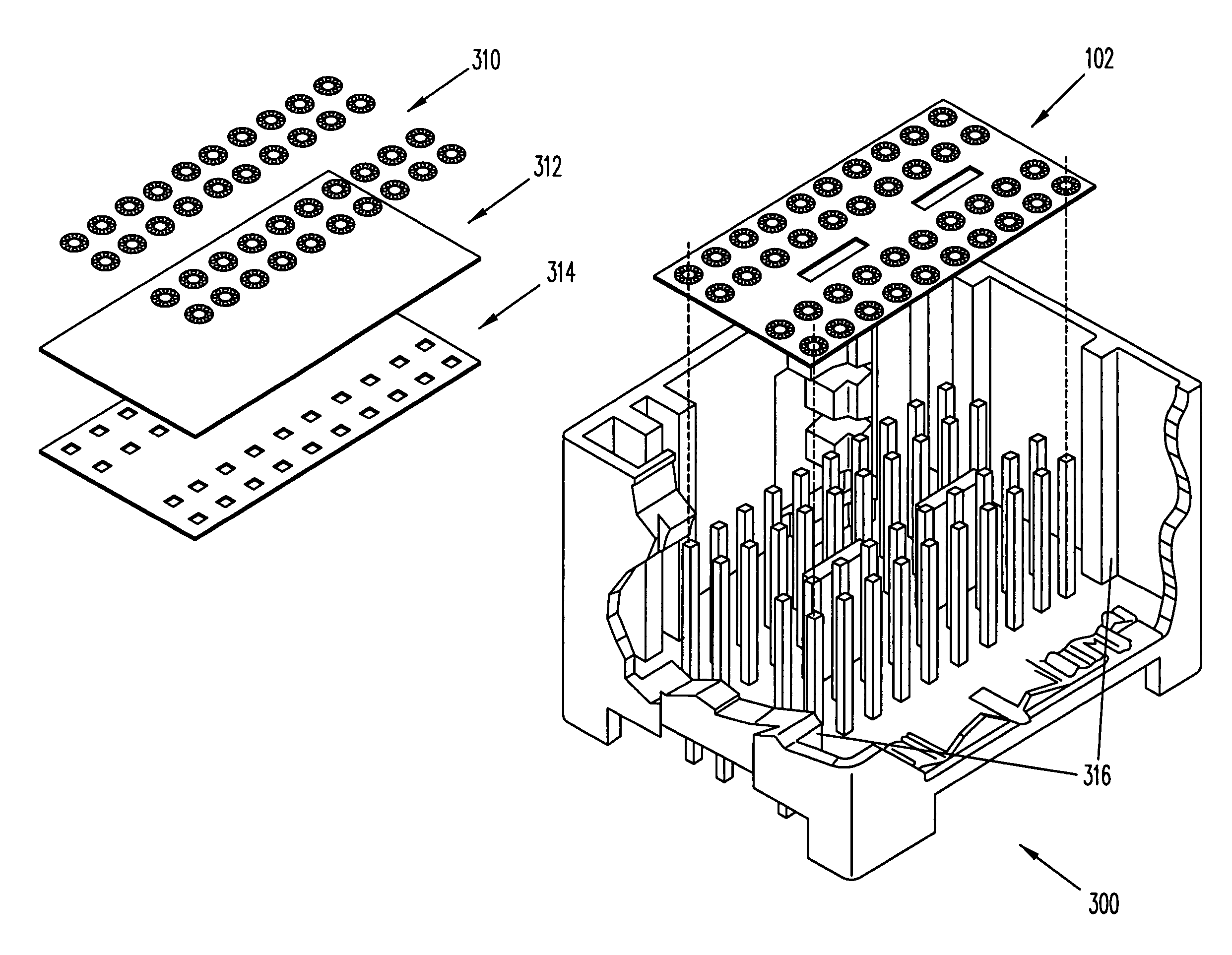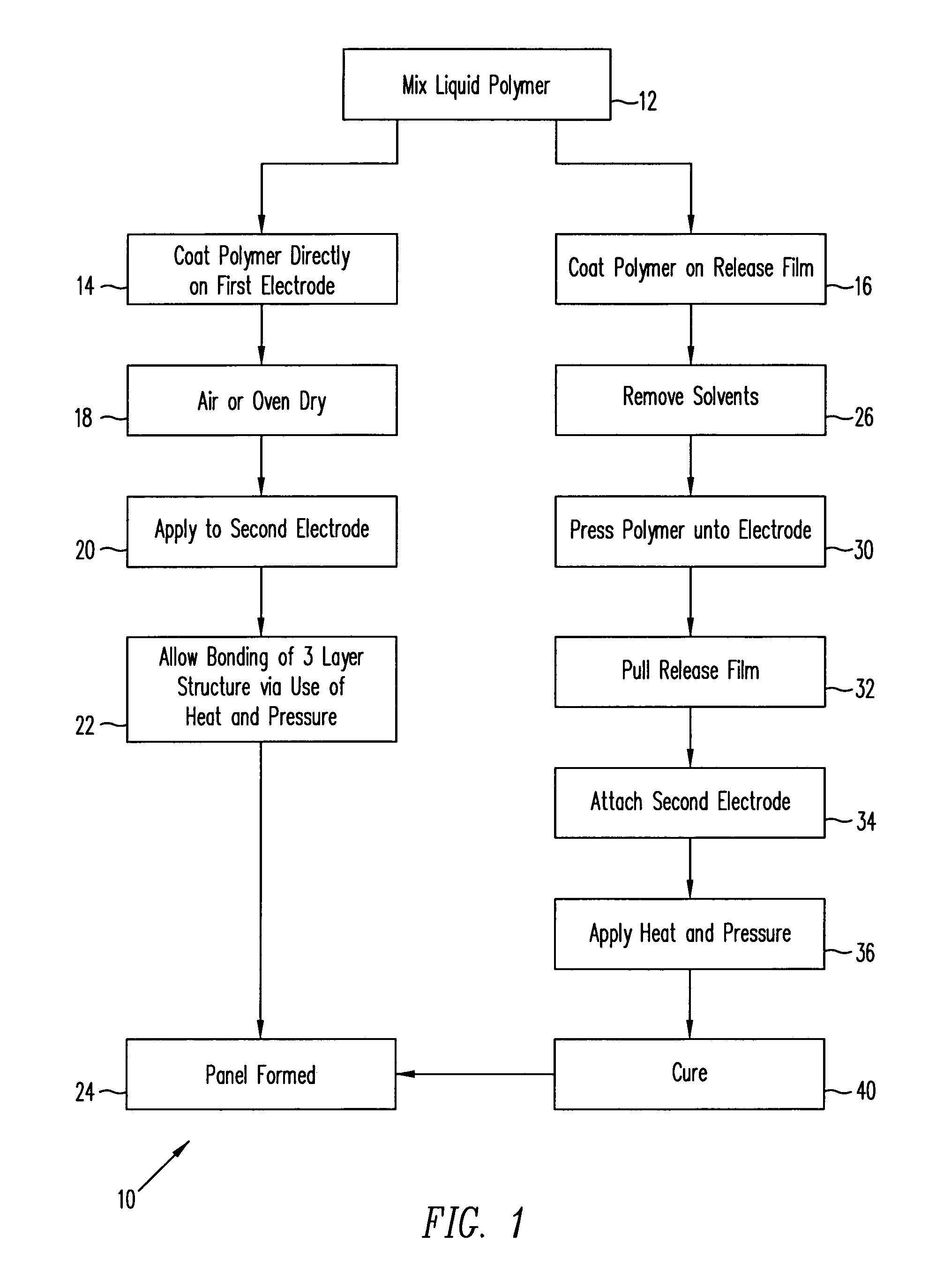Method of manufacturing devices to protect election components
a manufacturing method and electronic circuit technology, applied in the direction of emergency protective arrangements for limiting excess voltage/current, coupling device connection, protective switch operation/release mechanism, etc., can solve the problem of increasing not completely eliminating the risk of damage attributed to such disturbances, and more modern devices operating in the higher frequencies (ghz and above) using submicron line widths are more susceptible to damage which cannot be overcome using such methods. , to achieve the effect o
- Summary
- Abstract
- Description
- Claims
- Application Information
AI Technical Summary
Benefits of technology
Problems solved by technology
Method used
Image
Examples
Embodiment Construction
[0029]The present invention provides a process of making a substrate-less protection device using standard printed circuit board (PCB) manufacturing techniques thereby allowing the manufacture of large number of devices relatively inexpensively. With the present invention, multiple ESD protection devices can be manufactured in panels that can be custom formed for an unlimited number of applications. It is believed that the process of the present invention has implications toward the manufacture of an all PCB protection system such as flex circuit with total ESD protection and / or as a layer in a PCB with protection provided for sensitive integrated circuits.
Manufacturing a Protection Device in Panels Gives Maximum Yield in High Quantities
[0030]In general, the process of building a protection device according to the invention involves the use of a polymer-based formulation (or polymeric solution) that is coated directly on the electrodes forming the terminals of the protection device....
PUM
| Property | Measurement | Unit |
|---|---|---|
| pressure | aaaaa | aaaaa |
| insulator | aaaaa | aaaaa |
| viscosity | aaaaa | aaaaa |
Abstract
Description
Claims
Application Information
 Login to View More
Login to View More - R&D
- Intellectual Property
- Life Sciences
- Materials
- Tech Scout
- Unparalleled Data Quality
- Higher Quality Content
- 60% Fewer Hallucinations
Browse by: Latest US Patents, China's latest patents, Technical Efficacy Thesaurus, Application Domain, Technology Topic, Popular Technical Reports.
© 2025 PatSnap. All rights reserved.Legal|Privacy policy|Modern Slavery Act Transparency Statement|Sitemap|About US| Contact US: help@patsnap.com



